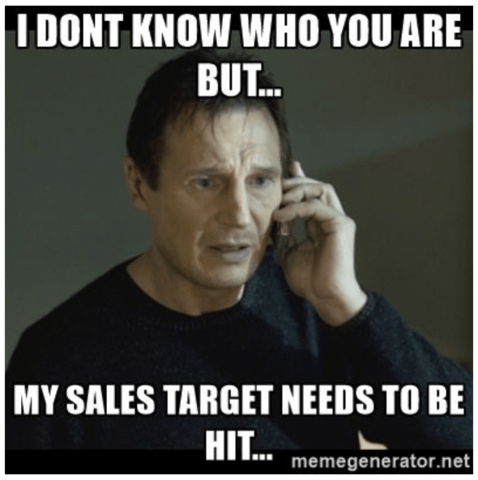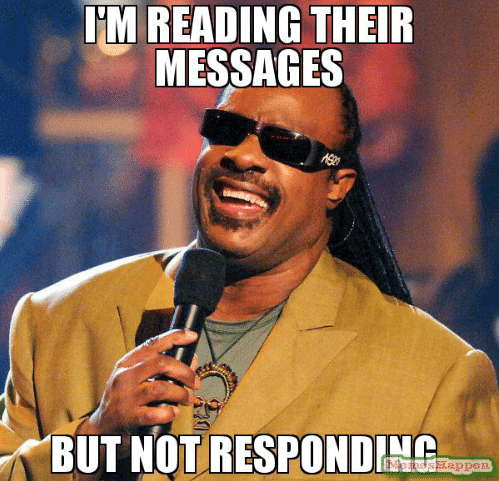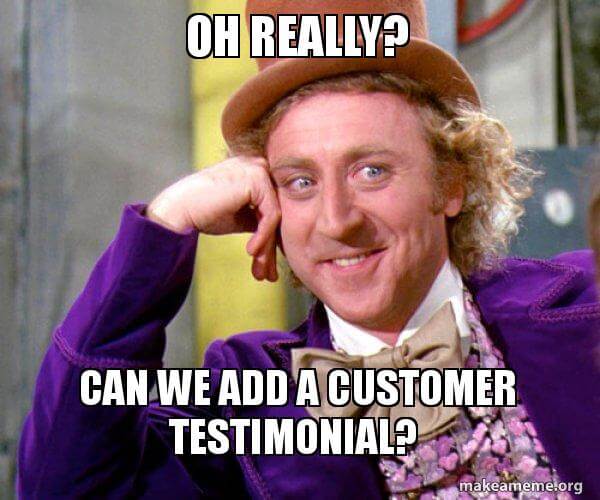Want a heads up when a new story drops? Subscribe here.
Social media is a powerful channel that we can use to convey our brand message to our target audience. Nowadays social media marketing strategies focus on tasks that go way beyond simple account management activities like post publishing. We have learned to actively listen to our audience, accept and respond to their feedback, deliver the content that is of high demand, entertain, educate, and above all create a strong bond between the brand and our followers.
However, in order to succeed in this tough endeavor, we are to know the do’s and don’ts of the game.
We need to learn what turns our followers off and how to avoid such unfavorable tone of voice, attitude or kind of mistakes and nourish a positive long-term relationship with them instead.
Table of Contents
Posting too much, too often
Being too active on social media may make you appear as an “attention-craver” to your online audience. Your followers can get overwhelmed with the amount of content you’re publishing and they could get annoyed to a point that they will hit the “unfollow” button.
It’s important that you understand that your followers may see everything you post. A post a day gives your audience enough time to digest and enjoy your content. Posting more than a couple of times a day will crowd your follower’s newsfeed. Remember, your followers have a variety of interests that are not limited to your brand only.
Make sure you are aware of which is the best time of day to post on social media platforms. This would vary depending on your location and audience specifics, so do your research thoroughly. Check at your social media analytics page and search for the times your business page got the highest number of impressions and engagement.
Plan your social media calendar ahead of time and work on your posting schedule. Optimize the number of your weekly posts so that your followers would have something to look forward to. If you stick to a stable weekly schedule, your followers will know when to check up your page for updates.
Too much promotion and sales talk
Sales talk has flooded our everyday interactions. We use sales talk practically every day in all aspects of our life: whether you’re convincing a child to eat his veggies in exchange for ice cream or you tell your dog to roll over for a treat – it all comes down to selling an idea, right?
Nevertheless, just like we warned you about the risks of high posting frequency, we are drawing your attention to the danger of pitching your followers way too persistently.

Give your audience the chance to absorb what you’re offering them and to consider whether your product/services are a good fit for them. Forcing your followers into making a purchase when they’re not ready will not turn them into repeat customers.
If you’re posting product images, explain what kind of solution those products offer to a common problem and how your target audience will benefit from using them. Add a call to action at the end.
Post a video, a product demo, or a customer testimonial – this is a great way to convince your target customers to make a purchase without actually ‘begging’ them to buy your product/service. Use an online video editor to add captions or subtitles alongside a call to action at the end of the video.
Improper use of hashtags
Hashtags could be really helpful in drafting a successful social media strategy. They give you the opportunity to reach out to a specific group of people who follow a relevant to your campaign subject. If you’re posting from your personal account, you don’t need to worry about the number of hashtags you use: add as much as you want. The more you can squeeze into your post, the better.
But that’s not the case with business profiles. Use a limited number of hashtags and make each of those counts. Choose hashtags that are relevant and appropriate to your type of business or industry.

Never use trending hashtags just for the sake of reaching a wider audience, especially if they have nothing to do with the content you’re publishing.
Avoid using hashtags for natural or social tragedies unless you’re expressing your concern or sympathies to those affected. Using such hashtags on promotional posts is simply unforgivable.
Not responding to comments and direct messages
No matter how regularly you may post on social media, if you don’t respond to comments and direct messages, people may be reluctant to follow you or like your page.
Think of it this way: imagine you compliment someone on the beautiful bag they’ve crafted and that person just ignores you. Won’t you feel offended? Your followers need to feel that they’ve been heard and appreciated.

You should always reply to the comment addressed to your business/brand. If someone is asking a question, give them an answer. The same goes for your followers’ comments: both positive and negative. As long as they are referring to your brand and business name: get in touch, show them that you listen and that you care about their customer satisfaction and feedback. But please do not react to your own post and comment.
Whether you like it or not, there will be negative feedback, no matter how good your product or service is. Whether your product/service has been publicly disliked by an online troll, a critic, or a complaining customer, be ready to respond in a relaxed manner. Use short answers and offer personal assistance via a phone call, email, or direct message.
If you neglect negative comments, people will start mistrusting you. If you address them, however, your audience will see that you’re being proactive, that you are listening to your audience, and that you are concerned about their positive experience with your brand.
Some social media platforms offer you the opportunity to create an automated response. Although this option is rather convenient and helpful, do not rely on it completely. Your followers will know when they get an automated response and will expect a real response soon after. Humanize the interaction with your audience by having a real person address their questions or queries.
Not utilizing YouTube or social media polls to get instant feedback
Polls are a great way to find out what your audience wants. If you have a YouTube channel for your business, use their free polls feature to get instant feedback from your followers. This feature is only available if your channel has over 1000 subscribers.
The great thing about YouTube polls is that you won’t have to create a survey on a third-party website to be able to gain knowledge about the opinions, requests, or feedback of your audience. Right there at your channel, you can create poll cards for your followers to click and comment on.

Here are some of the benefits of using the free poll feature at YouTube:
- You can ask your audience what videos they want to see. This will help you come up with great content ideas that are in high demand.
- Think of it as a conversation starter between you and your potential customers. The more comments you get, the more likely it is that YouTube will put your videos on the recommended list.
- You can share valuable information and knowledge with your audience. If there are things about your product/service like features, pricing, etc., a poll would be a great place to tap into those.
- Polls can help you get a glimpse of what your viewers’ preferences are. Aside from asking them what type of content they want to see, you can also ask them what day or time they prefer to have the new content released.
- The comment section of your poll is a great place to just have fun talking and mingling with your audience. Customers are more likely to patronize your product or service if they feel comfortable with your brand.
Sharing half-truths or false statistics
The quickest way to lose your credibility is to post hoaxes and false news on social media. Authenticity is a huge factor in building your brand and keeping your followers. If your viewers catch you posting things that are based on false data, they could feel misled and lied to.

Sharing news or posts that are relevant to your business or to the areas you serve can help boost engagement but you have to be very careful about what you share. Even if it comes from a source you trust, you should still double-check the credibility of the post. It’s even worse if you know that certain content is fake but you go ahead and share it anyway.
One effective way to verify if a post is based on actual facts or not is by checking it online. The damages caused by posting fake news can be detrimental to your business.
Posting content irrelevant to your target market
Your posts, combined with the hashtags you use, will more or less determine the type of audience you‘d reach with your content. Posting on topics that have nothing to do with your product, service, target location, and target audience won’t really give you much traction. Your existing followers will get confused and may stop clicking on your posts or following you altogether.
Not posting the right types of sales videos
Videos that are too salesy often don’t result in converting a lot of people.
If you want to make sales videos that work, don’t make the sale the focal point of your message. Instead, tell your audience a story that will make them believe in your product/service.
Stories will bring you and your target audience together, ultimately, people will start trusting you. When they trust you, it would be much easier to channel them down the sales funnel.
You’re probably wondering, why video? Video content is a great medium for reaching out to a broader online audience. It gives your audience a glimpse of who you’re. Videos humanize your brand, making it easier for people to trust and follow.
Here are some examples of sales videos that you can post on your social media business page:
Brand origin story
Telling the story of how your brand came to being. This is a great way to win the trust of your followers. It’s like sharing an important part of your journey with your audience. If you are being honest and transparent often your target audience will respect you for it and will reciprocate.
The video script can include a reenactment of how you originally came up with the final business concept; the struggles that your team faced throughout your journey; the company grew from a garage-based startup to a large firm in the city.
People love rags to riches stories. They give them hope and inspire them to pursue their dreams. Plus, if your audience realizes how hard you worked to get where you’re now, they’ll conclude that you are good at looking after your customers, and thus they’ll be confident in trusting your brand.
If you have old recordings of how your company got started, all the better – share it with your audience.
If you have changed many logos and slogans throughout your business journey, share them with your audience, too. Especially if there’s a good story behind their creation.
Customer testimonials
Videos are the best form of sharing your customers’ testimonials. Similar to word-of-mouth, hearing a review straight from a customer’s mouth makes it easier to believe. According to online reviews statistics, Over 90% of online consumers would trust a video testimonial as much as they would a recommendation from a friend.

Make sure to choose customers to whom your target audience can easily relate. Make short and meaningful videos. Add good background music that won’t distract the online users from the actual review.
As much as possible, avoid scripted customer testimonials. Remember, your customers are not professional actors and your audience will immediately know that the dialogues are memorized or being read.
Instead, record the customer’s testimony in their own words then just trim it down during video editing. Not only will this make the video shorter, but it’ll also highlight the important bits that you want your audience to see or hear.
Product explainer videos
Explainer videos are similar to product demo videos. They are short but powerful, with a strong call to action.

There are different types of explainer videos to choose from. You can go for an animated version since they’re visually appealing to a wide range of audiences. You can add infographics to explain the key features of your product or service.
Crowdfunding explainer videos are also popular. They can be live-action or animated or even both. These are great video formats for startups or small businesses who are looking for investors to back up their ideas and concept products.
Product explainer videos should not be all salesy. They attempt to introduce a product, explain its applications, and list its benefits. A perfect example of an effective and entertaining product explainer video is that from Dollar Shave Club.
It successfully communicates their offer, reveals their company background, culture, and it’s super funny and relatable.
Final thoughts on winning over social media audiences
Social media is a great platform to showcase your products and services. In order to make it work you have to post high-quality content, especially videos.
Remember to always back up the claims you make. Make sure that each product/service specific and characteristic you mention on social media is valid. Regardless of how amazing your videos may be, your audience will stop following you if they’re not satisfied with their first purchase.
As long as you consider your audience first, personalize your content, foster the connections you build with your audience, and avoid the mistakes mentioned above, you can expect loyal followership, converting customers, and ultimately, well-deserved ROI.











